I was working in the kitchen, half listening to the radio, when something caught my attention. The radio announcer, in introducing a piece of music, was describing a Parisian composer and musician who was extremely reclusive. The story went that the musician owned both halves of a semi-detached house and when visitors came, he would walk through the connecting door to the other half while the butler told the would-be visitors that he was not at home.
My initial reaction was: Wait…they have semi-detached houses in Paris? Where?
This is not a blog about Parisian house forms. But in all honesty, that’s what caught my attention at first. The announcer then added that the composer’s music was notoriously difficult to play. But the pianist Marc-André Hamelin managed it with aplomb. You can hear the piece he played on YouTube.
I liked what I heard and waited to the end to hear the composer’s name, which I had missed at the beginning of the broadcast. Charles-Valentin Alkan. I did not recognize it. Later, I mentioned it to a musician friend and he didn’t recognize it either. After listening to Alkan’s music over the last few days, I am amazed that this composer is not better known.
He was born in Paris in 1813 at 1 rue de Braque in the Marais (the house is still there). His name at birth was actually Charles-Valentin Morhange, but he and his five siblings took his father’s first name, Alkan, as their last name. The reasons are complicated, but have to do with a legal requirement relating to Jewish surnames. The father, Alkan Morhange, ran a music school. All six children went on to careers in music as composers, performers, or teachers. Among them, Charles-Valentin was considered a child prodigy.
He was not yet six years old when he auditioned for the Paris Conservatoire. He gave his first public performance (on the violin) when he was seven and started composing in his early teens. The future seemed bright. A biography of the composer suggests, however, some dark clouds.
Was Alkan overworked as a child? According to the Conservatoire register he was often away sick, and although there is no reason to suspect more than the usual childish ailments, he does seem later to have become highly neurotic about his health.*
But in his teens and early twenties, as his talent developed, it was all glitter and fame and hobnobbing with the likes of Chopin and George Sand in his twenties. Here is a picture of him as a young man.
He took lodgings in the Square d’Orléans in what is now the 9th arrondissement, the area once known as La Nouvelle Athènes. It was an exclusive enclave entered from the rue Taitbout. Several important artists lived there – not just Chopin (at no. 9) and Sand (no. 5) but also dancer Marie Taglioni (no. 2), and Alkan’s teacher at the Conservatoire, Joseph Zimmerman (no. 7).
Alkan specialized in the pedal-piano (piano-pédalier), which had playable pedals like an organ. His own instrument was made by Erard, a company with which he had a lifelong connection.
Just as everything seemed to be going so well, in 1839, when he was 26, Charles-Valentin Alkan withdrew from the concert stage for several years. Biographers attribute this withdrawal in part to the birth in February 1839 of his natural son (the euphemism for a child born out of wedlock), Elie Miriam Delaborde. (Delaborde later studied piano with Alkan, and became a celebrated performer and a teacher at the Conservatoire.)
The connection between Alkan and Delaborde was never made official. It is not confirmed in any French records. Alkan himself never acknowledged the child as his own. The boy’s mother was said to be Lina Eraïm Miriam of Nantes, who was apparently married to someone else at the time, but the records of the child’s birth are missing. Indeed, there are no records of Lina’s life either. She is a mystery. The name Delaborde may have come from the child’s foster mother in Brittany.
On the other hand, no information to the contrary has emerged, either. The child seems to have inherited Alkan’s musical talent, but also something more unusual: a fancy for parrots.
Both Delaborde and Alkan were parrot enthusiasts – Alkan [composed] a tombeau to a parrot in 1859, the Marcia funèbre sulla morte d’un papagello [funeral march on the death of a parrot] – and one hundred and twenty-one parrots and cockatoos accompanied Delaborde on his London trip in 1870.**
Inconclusive as evidence of paternity, but what a story. You can’t make this stuff up. The funeral march was written for four voices, three oboes, and a bassoon. The parrot’s name was Jaco. The singers repeatedly sing the words “As-tu déjeuné Jaco? De quoi?” (Have you lunched, Jaco? On what?) It is funny and sad at the same time.
Alkan returned to the concert stage in the 1840s, but he did not re-enter society. Although he was admired by his fellow artists, and his compositions attracted the attention of musical critics, the public did not warm to his choice of repertoire as a performer. One reviewer considered Schubert “old-fashioned” and Mendelssohn “drily scholastic.” I cannot imagine a modern critic saying that. As for his compositions, many were fiendishly difficult and he was probably one of the few who could master them. Have a listen to this tour de force, “Chemin de Fer” (Railway).
In 1849, Alkan gave a performance with a group of string players, a program of Bach and Mozart and his own compositions. It would be his last public performance for 25 years.
He became a private piano teacher, mostly to wealthy aristocratic women, which paid the bills, but he was otherwise reclusive and obsessed with his health. He moved away from the Square d’Orléans. He stopped composing. He mourned the death of his friend Chopin, who had died in 1849. He insisted on preparing his own food (unusual for a man in those days). He spent hours studying the Talmud. A photograph of him from this time does not even show his face.
The anecdote I heard told by the radio announcer is a garbled version of the fact that his concierge was instructed to tell all callers, “Monsieur Alkan is not at home.” When asked when he would be at home, the concierge usually replied, “Never.” Once, a dear friend visiting from Germany was told this, and when Alkan found out he had missed someone he actually wanted to see, he rushed out to find him, but it was too late.
The departure of his long-suffering housekeeper in 1861 brought on a crisis. Alkan went through no fewer than 51 servants in the year that followed (he was forced to make his own bed as well as make his own meals, just imagine), and he searched for a smaller flat. Eventually he found something affordable and acceptable at no. 29 on what was then called the rue de la Croix-du-Roule, now called the rue Daru, in the 8th arrondissement. He lived there until his death. It’s the building with the pinkish brick on the right in the photograph below.
He survived the siege of Paris and the Commune, and wonder of wonders, decided to perform in public again in 1873, when he was sixty years old, at the Erard Salon. He played the program entirely from memory and the audience (mostly fellow artists) gave him a warm reception. He went on to give more concerts, organized by his youngest brother, Gustave. He suffered from stage fright, but coped by giving informal recitals twice a week at Erard’s piano showroom on the rue du Mail, to build his confidence by playing for an audience. He maintained this routine for about eight years. You can still see the entrance to the Erard building at 23 rue du Mail.
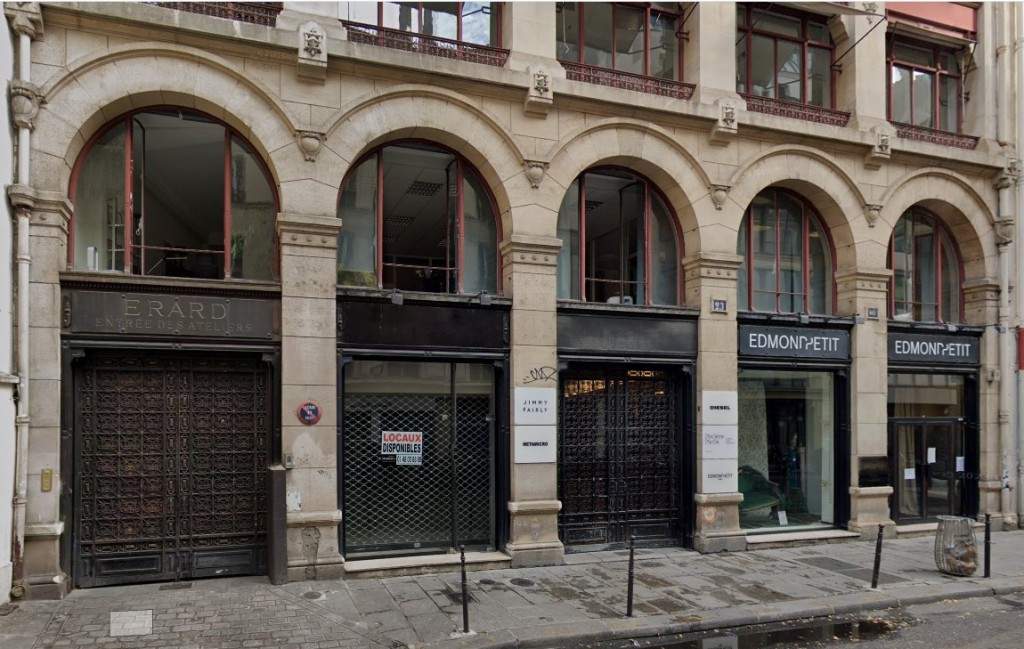
Alkan’s death in 1888, when he was alone in his apartment, has given rise to a constellation of stories. One version is that he was crushed by a falling bookshelf (or a cupboard). Another person suggested that it was an umbrella stand (that would have been an enormous umbrella stand). Another version has him falling from a library ladder. In several versions, he was said to be clutching the Talmud, which is traditionally kept on a top shelf so that no other book will be higher than it. But other versions have emerged, rather more mundane, suggesting that he died in his kitchen, probably of a heart attack, just as he was about to make a meal. There is even some disagreement on the date of his death.
One scholar published a couple of articles just on the death of Alkan, and concluded:
Alkan most probably collapsed between noon on the 28th and noon on the 29th [of March] in his kitchen. In falling he clutched at a large piece of furniture which fell with him to the floor. He was unable to extricate himself until the arrival of the concierge… He died at 8 p.m. on the 29th.***
Only four mourners were present at the burial in Montmartre Cemetery, one of them a representative of Erard, the piano makers. Some people were surprised to learn of his death, having assumed that he had died years earlier. His compositions were largely forgotten until the 1960s, and the revival of interest in his work was led by English and American pianists, one of whom became his first biographer; another had studied with a former student of Delaborde’s.
There is now an Alkan Society, based in England, and pianists who want to demonstrate their technique show off by performing his more difficult pieces, filled with fireworks. But he could also write quiet pieces, such as the lovely nocturne at the beginning of a recording by Stanley Hoogland.
Many mysteries in his story, but Charles-Valentin Alkan left a legacy of music that is well worth discovering.
Text by Philippa Campsie; portraits of Alkan and photo of piano-pédalier from Wikimedia Commons; photograph of Square d’Orléans from BNP Paribas Real Estate; photos of rue Daru and rue du Mail from Google Street View.
*Ronald Smith, Alkan: Volume 1: The Enigma (London: Kahn and Averill, 1976), page 17.
**William Alexander Eddie, Charles Valentin Alkan: His Life and His Music (Aldershot: Ashgate, 2007), page 7. What the quotation does not make clear is that Delaborde left Paris during the Franco-Prussian War. This was not a casual visit with the menagerie (which included some apes).
*** Hugh Macdonald, “More on Alkan’s Death,” The Musical Times, vol. 129, no. 1741 (March 1988), page 120.


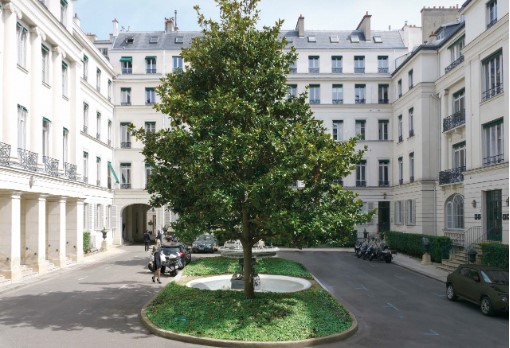
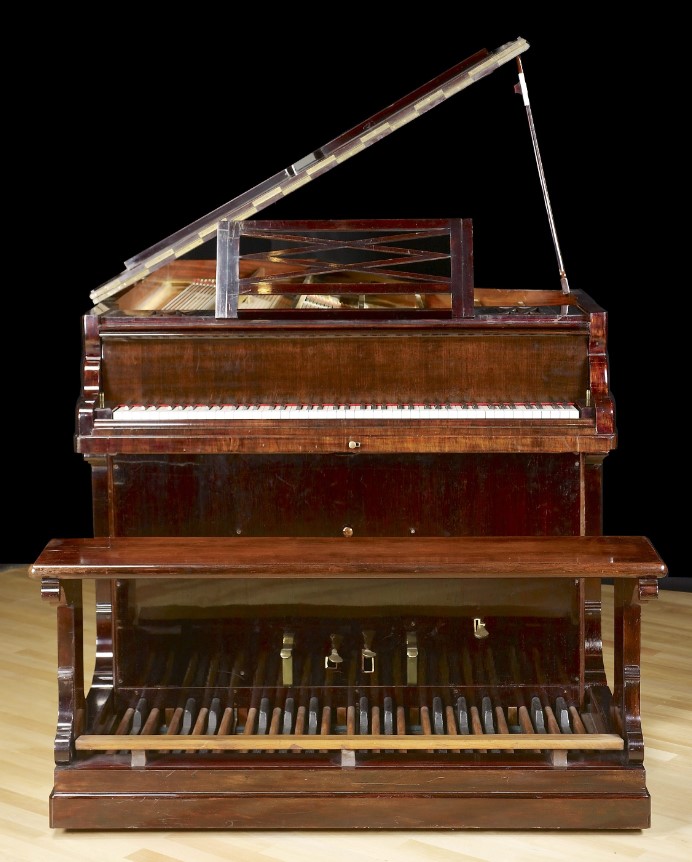







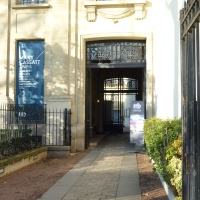


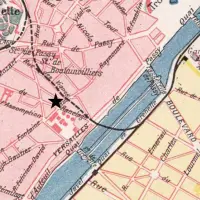

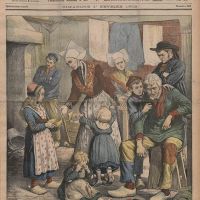









Thank you Philippa, This is a Very interesting story. I do hope that he had some or much joy in his life, too.
God bless, C-Marie
Dear C-Marie, I hope so too. And I hope more people get to hear his music. Best, Philippa
Thanks so much for this very interesting story. Thoroughly enjoyed it and will listen to Alkan’s music.
Hi Ana, I hope you enjoy the music. I found it very impressive. Best, Philippa
Love all your stories !!
Dear Pat, Thank you so much. I hope you enjoy the music, too. Philippa
What a fabulous article! As an amateur pianist and big fan of both Alkan and Marc-Andre Hamelin, this was a true pleasure to read. Merci infiniment!
You have heard of Alkan! I’m impressed. The other thing that was new to me was the pedal piano. I had no idea such a thing existed!
Playing classical piano and chamber music is my main hobby so I’ve loved Marc-Andre’s work for a long time, but I definitely NEVER knew about the pedal piano.
I’ve shared your excellent post with my piano friends and everyone loved your research!
I used to work in Paris, but haven’t been back since Covid.
I truly appreciate your work as a way to bring back lovely memories. Thank you for everything you do!
well, well. What an interesting and intruiging story you digged out here. Never heard of any of them all but I’m more of a Baroque music buff than a piano fan (although my husband is a pianist/organist as well as a conductor – all as a hobby and passtime)…. Thank you for this fascinating read. Great work!
Glad you enjoyed the post. Had your husband ever heard of Alkan?
I’m astonished by Alkan’s wonderful music. I don’t believe I had ever heard anything by him before this. Also, had never heard of, or seen, a pedal-piano. Thanks for your posts, always rich with “news.”
Hi James I send this e-mail to you since I think that you’ll find it interesting. Of course I’d never heard of the composer. K.
>
I am the great great grandson of Napoleon Alkan, CV Alkans brother. As a boy it was the ‘parrot song’ as I called it, a version by Raymond Lowenthal, that drew me to the music as it slowly grew in popularity in the 1970s’
Thank you so much for your comment. I love the parrot song! It would be great fun to sing. I shall look for the Lowenthal version. Have a happy New Year and apologies for the delay in replying. Philippa
Hi, I am Ethan, the conductor of the Funeral March on the Death of a Parrot video you linked. Thank you for linking our performance, and I greatly enjoyed reading your blog post! I love when more people learn about Alkan.
That was an excellent performance. Bravo. It’s something I would love to try myself one day. Philippa